toki pona ("the language of good", "good language") is a minimalist constructed language created by Sonja Lang that was first published in 2001.
jaki pona ("the good sh*t") is a short overview of the language that comes with a dictionary (which is derived from lipu lili pi toki pona).
Table of Contents
- Basic Structure
- Transliterating Names
- Sentence Types and Punctuation
- Negation and Order of Modifiers
- Preposition and Conjunctions
- Time and Space
- Numbers
- Advanced Grammar
- Dictionary
Basic Structure
toki pona has a 14 letter alphabet (a, e, i, j, k, l, m, n, o, p, s, t, u, w) which is used to create words by forming CVn (consonant, vovel, optional n) syllables. However, there are four forbidden pairings (ji, wo, wu and ti – the latter becomes si instead), and the word-initial consonant may be absent. Only proper names are capitalized, everything else is written in lower case.
Letters correspond to the sounds they mark in IPA, though additional voicing and some variations are allowed.
Sentences have a simple subject-verb-object word order. Subjects and the predicate (usually a verb; toki pona does not have a word for "to be", so the more generic term "predicate" will be used) are separated by the word li, unless the subject is only "mi" or "sina". Predicates and objects are separated by e. Predicates do not have a tense. Adjectives and adverbs, collectively called modifiers, go after the noun (as opposed to English).
Similar to prepositions, there are auxiliary- or pre-verbs that precede the verb or predicate. Usual examples are kama (will) or wile (need, must). There are no definite and indefinite articles.
mi loje.(I am red.)ona li loje.(It is red.)mi moku e pan.(I eat bread.)mi mute li lukin e tomo.(We are watching the house.)ona li tawa tomo.(She is going home.)ona li wile tawa tomo.(It wants to go home.)ona li wile e tomo tawa.(She wants a car.)ona li tomo tawa.(He is a car.)ona li tawa tomo tawa.(They are going to [their] car.)ona li tawa e tomo tawa.(He moves the car.)tomo tawa li tawa tomo.(The car is going home.)mi tomo tawa wile li wile tawa tomo mi.(I am a wannabe car and [I] want to go to my apartment.)
Transliterating Names
Proper names should be transliterated to toki pona, following standard toki pona grammar. Proper names are treated as modifiers, hence the use of a noun in front if them is generally required. The following conventions are customary, although they are not hard rules:
- Number of syllables should remain the same.
- The letter 'r' should become
l,work(depending on pronunciation). - Dental fricatives ('th') becomes either
s(when voiceless) ort(when voiced). - Consonant clusters should either be split or reduced to a single consonant.
- Vowel clusters should become split into multiple syllables with added consonants.
- toki pona words should not be used as names (unless it is based on real name).
Though there are no explicit rules against the 'nn' and 'nm' clusters (when the first syllable ends with an optional n and the next one begins with another nasal, e.g. jan Anna), it is generally avoided.
Sentence Types and Punctuation
Technically all punctuation marks are optional variants of the full stop (.) with the exception of the colon (:) and the comma (,). Using sitelen pona, no punctuation is used and each sentence is written on its own line. This is also done in chats and other informal settings, although colons are still used.
Declarative sentences are the default and should not need further explanation.
Question end with a question mark (?), and can be formed in three ways:
- Repeating the pre-verb or predicate, and putting an
alabetween them (yes-no question). - Using
semein place of the thing you want to question (open ended question). - Adding
anu seme?at the end of the sentence (open ended or closed question), or havingX anu Yin somewhere in the sentence (closed question).
To answer yes-no question, either the predicate (with or without subject) is repeated or ala is used; in case of closed questions, the correct option is repeated back. Open ended questions work similar to English.
sina lukin ala lukin e ona?(Are you looking at him?)[mi] lukin.(Yes.)mi lukin e ona.(Yes in a longer way.)sina lukin e ona anu seme?(You are looking at him [or what]?)[mi lukin e] ona.(Yes.)[mi lukin e ona] ala.(No.)sina lukin e ijo laso anu jelo?(Are you look at the blue thing or the yellow thing?)[mi lukin e ijo] jelo.(The yellow [one].)sina lukin e seme?(What are you looking at?)mi lukin e oko sina.(I am looking at your eyes.)seme li lukin e sina?(Who is looking at you?)jan Anon [li lukin [e sina]].(Anon [is looking [at me]].)sina seme e ona?(What are you doing to him?)[mi] sitelen [e ona]([I am] drawing [him].)
The exclamation mark (!) is used in three different ways:
- To form imperative ("command") sentences, in which case,
ois used in front of the verb and the subject may be ommitted; if it is not, thenoreplacesliand the sentence may express a wish or desire. - To form interjections, like "moku pona!" (good appetite!).
- To emphasize a declarative sentence; this way it visually shows verbal emphasis.
o lukin e ona!(Look at him!)sina o lukin e ona!(You, look at him!)toki!(Hi!)tawa pona!(Bye! [said by the one who stays])mi tawa!(Bye! [said by the one who leaves])awen pona!(Bye! [said by the one who leaves])lape pona!(Good sleeping!)moku pona!(Good appetite!)
Colons (:) are used when a preposition or e is followed by ni. These are used when the object is another sentence (in case of e), or in certain situations to form compound sentences. The most often used preposition in this case are tan ("because") and sama ("like, similar").
mi pilin pona tan ni: soweli suwi mi li mu.(I feel good, because my cat is purring.)jan Sotan li wile e ni: musi ona li pona tawa jan.(Zotn wants people to like his music.)ona li sona e tenpo sama ni: jan ale li tawa kon.(She knows a time when everyone is flying.)sina tawa sama ni: jan li wile pakala e sina.(You are running as if people would want to hurt you.)
Commas (,) can be used freely to visually separate parts of a sentence, although customarily they are only put before prepositions, and either before or after la.
Negation and Order of Modifiers
Negation is almost exclusively expressed by using the word ala which is a modifier in this use.
Modifiers usually do not have a fixed order as it is context dependent, but generally ala would be the last modifier in a noun phrase or a modifier group (see Advanced Grammar), only followed by the possessor (theoreticaly; this is rather rare). However, its placement may vary depending on what and how we want to emphasize or connote.
mi loje ala.(I am not red.)mi ala li loje.(Not-I is red.)ona ala li loje ala.(Not-it is not-red.)mi moku e pan ala.(I am not eating bread.)jan ala pi sona mute(No one of knowledge)jan pi sona mute ala(Human of no great knowledge)jan pi sona ala mute(Man of great lack-of-knowledge)ona li tawa tomo ala.(She is going not-home.)ona li tawa ala tomo.(She is not going home.)ona li wile ala tawa tomo.(It does not want want to go home.)ona li wile e tomo tawa ala.(She does not want a car.)ni li kili laso ala.(This is not a blue fruit.)ni li kili ala laso.(This is a blue thing [that is not a fruit].)mi lon ala ma Amelica.(I am not in the Americas.)mi lon ma Mewika ala.(I am in not in the USA. [but somewhere else].)
Prepositions and Conjunctions
Prepositions are followed by noun phrases (nouns and modifiers; along with the prepositions, they are called prepositional phrases) and they can be put after virtually any noun phrase (such as the subject or object) to modify or specify their meanings. There are 5 prepositions in toki pona, kepeken (with), lon (at), sama (like), tan (from, because) and tawa (to, for, going to). When these are used at the end of sentences, then their meaning may apply to the whole sentence as opposed to the (last) object; most often this is a 'lon' structure indicating physical locations or time.
Conjunctions, with the exception of taso, must be used along with la (see under Advanced Grammar), or they have special sentence structures. The following ones are available:
- And
- Between subjects, use
en. - Between verbs, use
li. - Betwen object, use
e. - To apply it to the whole sentence (linking it to the previous one), begin the sentence with
kin la(alternativelyen la). - Between modifiers, use
pi M1 en M2(where M1 and M2 are the modifiers); this cannot be combined with multiple subjects!
- Between subjects, use
- Or
- Same as "and", but always use
anu. - Although
ante lais used more often thananu la.
- Same as "and", but always use
- But
taso(as a conjunction) is used at the beginning of sentences and nowhere else.- To express things like "anything but…" and "except", structures like "ale en ona ala" (everything and not it) could be used.
mi en sina li tawa.(You and I are walking.)soweli suwi pi suli en laso li musi.(The large and blue cats are playing.)jan Sotan li pali li wile moku.(Zotn is working and [is] hungry.)ona li moku e pan e telo walo kiwen.(He is eating bread and cheese.)mi wile e musi anu lape.(I want to enjoy life or sleep.)ona li wile pali. ante la ona li kama nasa.(She must work, otherwise she'd become crazy.)mi wile pali e musi. taso mi jo e wawa ala.(I want to make music, but I am exhausted.)
Time and Space
Talking about time and location ("space") are very similar: they both use primarily lon and they both can be used as the context in la phrases (see Advanced Grammar).
Time is expressed as a noun phrase using tenpo and modifiers. The most common ones are kama (for future), pini (for past), ni (for present), suno (for day/daytime) and pimeja (for night); "kama", "pini" and "ni" are often used in conjunction with the latter two.
ona li lape lon tenpo pimeja.(She sleeps at night.)ona li kama apeja lon tenpo suno ni.(Today she is going to be miserable.)tenpo kama la ona li tawa tomo pali.(She will go to work.)tenpo pini la ona li pali ala.(She did not work before.)taso tenpo ni la ona li moku.(But she is [only] eating for now.)
Space works similar to time, although with more variance: instead of having a single noun, we can use ma (for place in general; also "outside") and tomo (for house/building or "inside") among others. Spatial nouns after lon mean current location, and direction if they are preceded by tawa:
- insa
- inside, within, among
- poka
- on the side, next to, besides
- sewi
- above
- anpa
- below, under
- sinpin
- in front, before
- monsi
- behind, at the back, after
soweli li lon insa tomo.(The cat is in the house.)soweli li lon poka pi jan lawa ona.(The dog is next to its owner.)soweli li lape lon soweli ante.(The cat is sleeping on the dog.)musi kiwen li lon supa lon sewi pi ilo pi sitelen tawa.(The [cat] statue is on a shelf above the telly.)soweli li lape lon anpa supa.(The cat is sleeping under the bed.)soweli li tawa monsi tomo.(The cat goes behind the house [presumably to sleep].)
Numbers
Numbers are used less frequently than in most languages as there are only limited ways to express numbers over 10 and neither pronouns nor nouns are inherently singular or plural. There are 2 major systems of using numbers, that we will refer to as "short range" and "extended range", as well as a "mid range" which is commonly used (though mostly unrecognized):
| Number | Short range | Mid range | Extended range | Note |
|---|---|---|---|---|
| ala | 0, none | 0, none | 0 | |
| wan | 1 | 1 | 1 | |
| tu | 2 | 2 | 2 | |
| tuli | 3 | Archaic, it was removed from the dictionary early on. | ||
| po | 4 | Archaic, it was removed from the dictionary early on. | ||
| luka | 5 | 5 | ||
| mute | 2+, plural | 11+ | 20 | |
| ale/ali | all | all | 100, all | Used for "all", "every" and "countless". |
Numbers are modifiers that always go after the last modifier, but optionally before the first "pi" (see Advanced Grammar). Unlike other modifiers, pi is never used in front of them. Numbers without specific words for them are formed by adding them up, starting with the largest – this does not apply to short range since in that system only those single words are used. For example, "luka tu wan" is 8 (5 + 2 + 1), while "tu tu" is 4 (2 + 2).
Ordinal numbers are expressed using nanpa followed by the number and work the same as regular numbers.
soweli suwi tu wan(Three cats)soweli suwi tuli(Three cats)soweli suwi nanpa tu wan(The third cat)
Advanced Grammar
pi is used to group modifiers. For example, "jan pona suli mute" would mean "big friends", but "jan pona pi suli mute" would mean "[a] very big friend".
When spatial nouns are used in prepositional phrases, a "pi" can be placed after the spatial noun if they are followed by more than one word.
Possessors are noun phrases that go after all the other modifiers. If the possessor is more than one word or could be mistaken for a regular modifier, put a "pi" in front of the possessor; the latter case is considered archaic.
soweli suwi mi(my cat)soweli suwi tu mi(my two cats)soweli suwi mute pi jan Sotan(Zotn's cats)soweli suwi jan(humanoid cat OR a human's cat)soweli suwi pi jan(a human's cat)
The word la is used to separate context (or condition) and main sentence. The latter is a normal sentence, but the context can be virtually any phrase or a full sentence; most often it is a full sentence or a phrase denoting time or place.
Prepositional phrases may be placed in front of "la" to indicate that its meaning applies to the whole sentence, although the preposition itself may be dropped.
tenpo kama la mi pali mute.(In the future, I shall work more.)sina lon tomo la suno sewi li ken ala lukin e sina.(If/when you are at home, the the Sun god is unable to see you.)[lon] ma tomo Uso la jan moli li tawa sin.(In Uso, dead people are walking again.)toki pona li pona tawa mi.(I like toki pona.)mi la toki pona li pona.(I like toki pona.)
Dictionary
Words in toki pona often have vague definitions, their meaning depending on the context they appear in. They are also quite flexible as to where and how they appear within a sentence; for example "kipisi" at first only had the definition of "to cut", but this meaning can be extrapolated to mean "cut" as an adjective, or "cutting" as a noun. In this dictionary, multiple meanings are listed for most words, however this does not mean that words without a definition as a noun cannot be use as one in the right context. Function (or grammatical) words are the only exceptions to this rule.
There are multiple different dictionaries that can be found with word counts most ranging between 118–150. pu, the "official Toki Pona book" (2014) written by jan Sonja, had a 120/123 word dictionary – where 6 words were merged in pairs. ku, the "Toki Pona Dictionary" (2021), also by jan Sonja, had a main word count ("ku suli") of 137, with even more words present as it contained every word that were in use at the time, among others ("ku lili"); this can add up as high as 190. Words that were coined by the community after pu's release are colloquially called "nimi sin" (lit. new words).
Due to the small number of words, definitions may be vague and toki pona relies more on context than most languages. It also prefers to "leave out" unimportant details, favoring simplicity.
This dictionary contains 146 words (136 common + 10 archaic ones), including the entirety of pu's dictionary, in addition to select pre-pu words (that were either replaced or deprecated) and post-pu words – these additions are all present in ku. Word usage can vary between groups and dialects, but generally it is best practice to mostly restrict ourselves to use words found in pu; non-pu words will have a pu version after their definitions to offer "pu friendly" alternatives and older, archaic words that are seldom used will be marked with a leading asterisk (*).
Abbreviations
n- noun
v- verb (either transitive or intransitive)
a- pre-verb or auxiliary verb
p- preposition
m- modifier (adjective or adverb)
f- function word (grammatical words)
#- numerical value
i- interjection
c- conjunction
la- meanings of the word if it stands alone before la
pu- current versions or alternatives of non-pu words
see- see also (very similar words, or was at one point merged with marked words)
Numbers following any of these letters mark alternative definitions.
Index: A E I J K L M N O P S T U W Y
A
a 
m1 (emotional) emphasis
m2 exaggeration, superlative (after adjectives)
i Ah! I got it! Hahaha! (as "a a a")
see kin
akesi 
n1 reptile, amphibian
n2 non-cute animal, monster (dialectal)
non-cute animal definition has been removed in the Toki Pona Dictionary.
ala 
n nothing, no one, null, the lack of (something)
v deny
m no, not
# 0
i No!
alasa 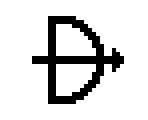
n hunting, searching
v1 hunt, forage, gather
v2 look for, search determinedly
ale/ali 
n everything, life, universe
m all, each, every, countless
#1 all, countless amount
#2 100
la all told, nevertheless, despite everything, either way
ale was the original, while ali was added in 2002 to avoid ambiguity with ala in speech.
anpa 
n bottom, below
v1 kneel, bow, accept (the terms set by someone else)
v2 defeat, beat, conquer, enslave
m1 low, below, down, beneath
m2 dependent
ante 
n change, difference, diversity
v alter, change, convert, transform
m1 different, altered, changed
m2 other
la or, otherwise
anu 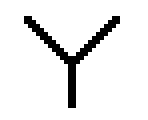
f or
la or
apeja 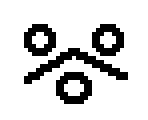
n depression, abuse, shame, dishonor
v verbal attack, disgrace, depress
m shameful, dishonored, depressive
p ike, utala toki, toki anpa
Added in early 2010, but was not included in pu.
awen 
n waiting, staying
v1 wait, wait for (with "tawa"), stay, remain
v2 keep something unchanged
a keep
m kept, protected (from change), remaining
la still
E
e 
f1 separates the predicate and the object
f2 and (if there are multiple objects)
en 
f and (between subject)
la and, moreover
esun 
n business
v buy, do business
m financial, for sale
I
ijo 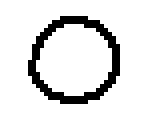
n something, thing, object
ike 
n bad(ness), evil
v ruin, spoil
m bad, negative, wrong, corrupted, evil
m non-trivial, complex
la sadly
*iki/ipi
pu ona
iki was replaced for its similarity to ike, while ipi was replaced before first draft.
ilo 
n tool, machine, device
insa 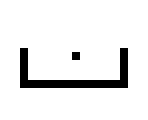
n inside
n stomach, organ
m1 internal
m2 inner, inside, center, between
J
jaki 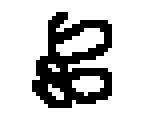
n1 dirt, filth
n2 garbage, waste, sh*t
v stain, defile, discard
m disgusting, toxic, unclean, stained
*jalan
pu noka
Proposed replacement for noka by jan Sonja. The community voted against it.
jan 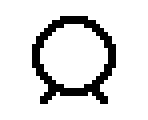
n human, person
m humanoid, human-like
jelo 
m yellow
jo 
v have, own, carry, contain
K
kala 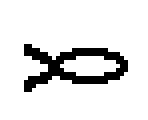
n1 aquatic animal
n2 fish
m fish-like, aquatic
kalama 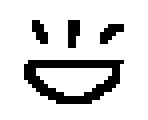
n sound, noise, roar
v produce a sound, yell, bawl
m loud, audible
kama 
a become, will, pursue actions to arrive to (a certain state), "future tense"
m to become, coming, arriving
*kan
f among, with, near by
pu poka, kepeken
Removed in 2002 in favor of poka and kepeken.
*kapa
pu nena
It was the first word to be replaced, for unknown reasons.
*kapesi
m brown, gray
pu pimeja
Removed in 2002 without a replacement.
kasi 
n plant, vegetation
m1 plant-like
m2 green (after kule)
ken 
n ability, chance, possibility
a can, able to, allowed to
m able, possible, allowed
kepeken 
p use, with
v use
kijetesantakalu 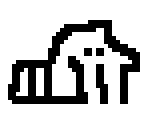
n animal from the Procyonidae family (such as raccoons and kinkajous)
pu soweli
Added as an April Fool's joke in 2009, now it is a "fan favorite".
kili 
n fruit, vegetable, mushroom
kin 
m1 also, too, again
m2 confirmation, emphasis (not as strong as a)
la also, and
see a
kipisi 
v cut
pu tu
Presented along with namako and monsuta around 2010, not included in pu.
kiwen 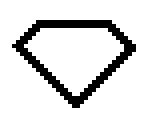
n1 metal, rock, stone
n2 hard object
m hard, heavy
Originally wawa ma was used before this word was created.
ko 
n semi-solid material, paste, powder, clay, dough
kon 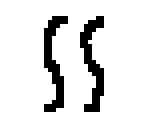
n1 air, breath
n2 spirit, essence, meaning, sense, concept
n3 mind, consciousness, soul
m air-like, gaseous
ku 
n the Toki Pona Dictionary
v interacting with the Toki Pona Dictionary
m according to/as in/by the Toki Pona Dictionary
kule 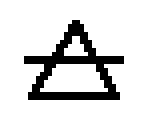
n color
v color
m colorful, pigmented
kulupu 
n1 group, collection, set
n2 community, nation, society
kute 
n ear
v hear, listen to
L
la 
p separates the context and the main sentence
lanpan 
v take, seize, steal, catch, receive
pu kama jo, alasa
It was coined by the community shortly after pu was released, making it one of the most used nimi sin.
lape 
v sleep, rest
laso 
m1 blue
m2 green
lawa 
n1 head
n2 leader
v lead, rule, manage, control, direct
leko 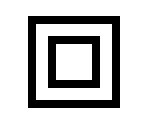
n square, block, stairs, edge
pu sike ala
Removed from then-official dictionary in 2004.
len 
n1 cloth, fabric, textile
n2 cover, layer
v1 wear, cover
v2 hide
m1 clothed, covered, covering
m2 hidden
lete 
m1 cold
m2 raw, uncooked
li 
f1 separates the predicate and the object
f2 and (between predicates)
lili 
m1 small, little, short
m2 young
m3 a bit, slightly
linja 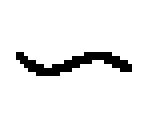
n hair, rope, thread
m long and flexible, rope-like
lipu 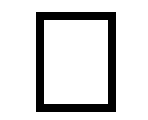
n document, book, website, written record
m1 flat, page-like
m2 documented
loje 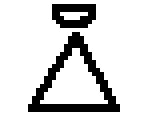
m red
lon 
v place, put
m existing, real, factual, true
p located at, at the time of
i indeed, that's right
la actually, truly, in reality
luka 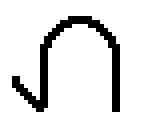
n upper or front limb (hand, arm)
m with hands, by hands
# 5
lukin 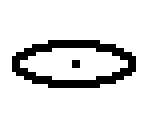
v1 look, see, examine, read, watch
v2 (with tawa) search, look for, seek
a try to
m1 visible, readable
m2 seemingly, -looking (as in "good looking")
see oko
In pu, lukin and oko were merged and could be used interchangibly.
lupa 
n hole, orifice, window, door
v pierce, stab, dig
m full of holes, hollow
M
ma 
n1 land, country, place
n2 earth, dry land, outdoor area
m1 terrestrial
m2 outside
*majuna 
m old
pu sin ala, lili ala, suli
Removed before first public draft.
mama 
n parent, ancestor, origin, creator, caretaker
m predecessor, parental, original
mani 
n1 money, wealth
n2 livestock
m valuable
meli 
n woman, girl
m1 female (of their species)
m2 feminine
mi 
n 1st person (I, me; we, us)
m my, mine; our, ours
mije 
n male, boy
m1 male (of their species)
m2 masculine
moku 
n food, meal, sustenance
v eat, drink, consume, inhale, swallow
m edible, nourishing
moli 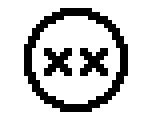
n death
v murder, kill
m dying, dead, lethal, mortal, fatal, non-functional (permanently)
monsi 
n back, rear end
v retreat
m behind
monsuta 
n monster
v fear, be afraid of
m frightening
pu ike, akesi, apeja
Added in 2010 along with kipisi and namako, not included in pu.
mu 
n1 animal noise
n2 meaningless or incomprehensible talking
v make animal noises, speak incomprehensibly
m meaningless, incomprehensible, unintelligible
i animal vocalization (such as 'meow', 'moo', 'quack')
mun 
n moon, star, celestial body
m lunar
musi 
n1 fun
n2 art
v1 play, have fun
m entertaining, artistic
mute 
v multiply, extend
m many, a lot, more, much, very
#1 many
#2 20
N
namako 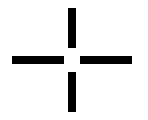
n addition, bonus, spice (for food)
m extra, additional
la additionally, furthermore
see sin
Added along with kipisi and monsuta in 2010. In pu, it was merged with sin.
nanpa 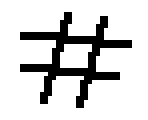
n number
f -th (ordinal number)
nasa 
v fool around
m unusual, strange, weird, crazy, intoxicated
nasin 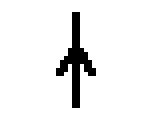
n1 path, road
n2 way, method
v follow, adopt
nena 
n mountain, hill
n protuberance, bump
m bumpy, hilly, undulating
ni 
n this, that
v point, refer to
m this, that
f that (like a conjunction, after e or a preposition)
nimi 
n name, word
noka 
n1 bottom or rear limb (foot, leg); organ of locomotion
v kick
m1 on foot, by foot
m2 lower (part)
O
o 
f marks imperative and vocative
oko 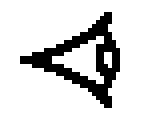
n eye
v look (but not see)
see lukin
It was merged with lukin in pu.
olin 
n love, emotional affection
v love, adore
ona 
n 3rd person (he, she, it, they)
m their, theirs (and all the others)
open 
n start, beginning
v open, activate, turn on
a begin, start
m1 open, activated
m2 available, ready
P
pakala 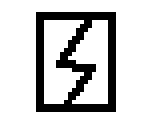
n1 damage, injury
n2 error, bug, accident, mistake
v brake, damage
m broken, damaged, non-funcional
i dammit! shoot!
pake 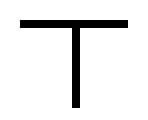
v prevent, block, obstruct
Suggested by jan Sonja, never officially added (before ku).
pali 
n work, job, process
v do, make, build, work (on)
palisa 
n rod, stick; long and solid object
m long and solid
pan 
n1 bread
n2 cereal, corn, rice, grain
pana 
v1 give, send
v2 share, publish, release
*pasila/pasi
see pona
pasila was replaced before the first public draft; pasi was a typo later in a collection of "deprecated words".
*pata
n sibling
pu jan sama
It was removed in 2004.
pi 
f1 separates modifier groups after the noun
f2 (archaic) of
pilin 
n1 feeling, emotion, instinct
n2 heart (often after insa)
v1 feel, smell, sense
v2 guess, think (emotionally or subjectively)
pimeja 
n darkness
v darken
m1 black
m2 dark, unlit
pini 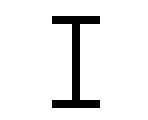
n1 end, finish
n2 past
v1 finish, end, stop, complete
v2 deactivate
a finish, stop, "past tense"
m finished, past, former, ex-
pipi 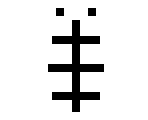
n insect, bug, spider
*po
# 4
pu tu tu
Removed before toki pona became well-known.
poka 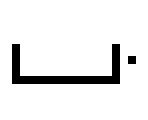
n1 side (of something)
n2 hip
v approach, come near
m1 near, by, next to
m2 along with, together with
p (archaic) along with, at the side of, close to
While it is no longer used as a preposition, it used to contrast kepeken by poka meaning physical or ideological closeness, and kepeken meaning using/with an instrument or (as) a tool.
poki 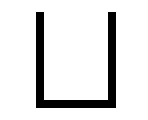
n box, container, bag, bowl
v contain
pona 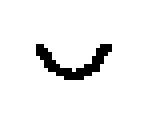
v help, repair, fix
v improve, upgrade
m good, nice, positive, friendly, useful, simple
i great! thanks!
powe 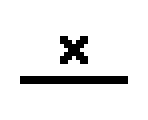
v deceive, pretend, cheat, trick
m false, untrue
pu lon ala, toki ike, ike
It was never added to any official dictionary (before ku).
pu 
n the official Toki Pona book
v interacting with the official Toki Pona book
m according to/as in/by the official Toki Pona book
S
sama 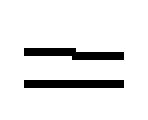
m same, similar
f same as, equal to, like, akin to
la similarly, like
seli 
n fire, heat, chemical reaction
v cook, bake, heat
m hot, warm, cooked
selo 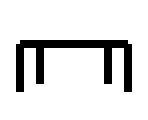
n outer layer, shell, skin, wall, separator
v separate
seme 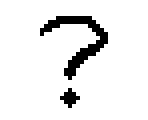
n what? who?
v does what?
m1 which? what kind?
m2 how?
sewi 
v1 get up, arise, lift, raise up, win
v2 ascend
m1 above, upwards, elevated, superior
m2 divine, sacred, holy, religious, supernatural
sijelo 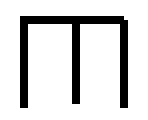
n1 body, main structure, main section
n2 torso
sike 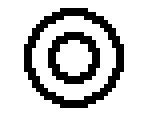
n round or circular object
v repeat, rotate
v form into a circle
m round, circular, spherical
m repeated(ly), again and again
sin 
v renew, freshen, update
m new, fresh
see namako
This word was merged with namako in pu, although their uses remained largely separate.
sina 
n 2nd person (thou, you)
m thy, thine; your, yours
sinpin 
n face, front facing surface
m1 front, frontal
m2 facial
sitelen 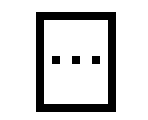
n drawing, writing, picture, image, symbol, visual representation of something
v draw, write, paint
m written, drawn
soko 
n mushroom, fungus
pu kili, kasi
sona 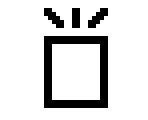
n1 knowledge, data and information
n2 intelligence, wisdom
v know, skilled in
m known
While factuality is usually implied with sona, it does not necessarily mean that the knowledge is reliable (use lon to mark factuality if needed).
soweli 
n1 land animal
n2 mammal
m wild, animalistic
su 
n The Wonderful Wizard of Oz (Toki Pona edition)
v interacting with the The Wonderful Wizard of Oz (Toki Pona edition)
m according to/as in/by the The Wonderful Wizard of Oz (Toki Pona edition)
suli 
m1 big, large, heavy
m2 adult
m3 important
suno 
n1 Sun (celestial body)
n2 light source
m1 bright, lit, shining
m2 gold (color, after kule)
supa 
n1 horizontal surface
n2 thing to put or rest something on
v lie (down), lay (down)
m1 resting
m2 can be rested on
suwi 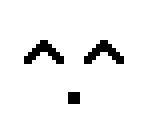
n sweets
m1 sweet
m2 cute, adorable
m3 innocent
T
tan 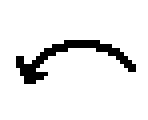
n reason, origin point
v cause
p1 from, by
p2 because (of), since
taso 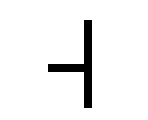
m only
c but
tawa 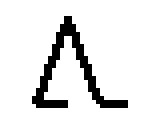
v move (something)
m moving
p1 going to
p2 for, to
telo 
n1 water
n2 liquid
v water, wash
m1 wet
m2 liquid
tenpo 
n1 time, period
toki 
n1 speaking, verbal communication
n2 language
v1 say, talk, tell, communicate
v2 think (rationally or objectively)
i hello!
tomo 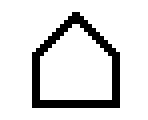
n house, room, indoor or enclosed space
n2 home
tonsi 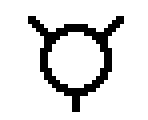
n non-binary, genderqueer, transgender
m gender-nonconforming
pu jan kule
This word was coined by the community shortly after pu was released.
"jan kule" is not a true alternative, but a broader term meaning "queer" (LGBTQ+).
tu 
v cut
# 2
see kipisi
Only received it's "cut" meaning after kipisi's removal in pu.
*tuli
# 3
pu tu wan
Removed before toki pona became well-known.
U
unpa 
n sex, intercourse
v1 have sex (with)
v2 have marital relation with
m sexual, sexually
More generally could be defined as "performing the action necessary for reproduction, with or without the intent of reproducing".
Opinions vary about whether this word is purely used for its strictly sexual meaning, or could be applied to other, non-sexual activities and relationships.
uta 
n mouth, lips
v kiss, lick
m oral
utala 
n fight, battle, war
v battle, challenge, fight
m violent, aggressive, fighting
W
walo 
m1 white
m2 light, pale
m3 innocent, virgin
wan 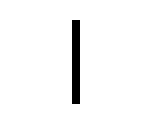
m unique
# 1
waso 
n1 aerial animal (able to travel in the air by flying, gliding, etc.)
n2 bird
m winged (animal), flying (creature)
wawa 
n1 power, energy
n2 magic
m1 strong, powerful
m2 energetic, intense
m3 confident, sure
weka 
v1 make distance (from object); get away from, throw away, remove
v2 ignore
m1 away
m2 ignored
wile 
n1 will, hope
n2 urge, need
v want, need
a want, should, have to, must, need
m1 wanted, desired
m2 necessary, required
Y
yupekosi 
v to behave like George Lucas and revise your old creative works and actually make them worse
pu wile ike
"Nobody knows how to pronounce the y."[sic] – jan Sonja
A toki pona ("jó nyelv", "a jóság nyelve") egy minimalista mesterséges nyelv, amit Sonja Lang hozott létre és publikált eredetileg 2001-ben.
A jaki pona ("a jó cucc") egy rövid összefoglalója és szótára a nyelvnek (az utóbbi a lipu lili pi toki pona szótára alapján készült).
Tartalomjegyzék
- Nyelvtani alapok
- Tulajdonnevek átírása
- Mondatfajták és írásjelek
- Tagadás és Módosítószavak
- Előljáró- és Kötőszavak
- Tér és Idő
- Számok
- Emelt Szintű Nyelvtan
- Szótár
Nyelvtani Alapok
A toki pona ábécéje 14 betűből áll (a, e, i, j, k, l, m, n, o, p, s, t, u, w), a szavak pedig CVn (mássalhangzó, magánhangzó, opcionális n) szótagokból állnak. Viszont van négy tiltott szótag (ji, wo, wu és ti – az utóbbi si-vé változik) és a szóeleji mássalhangzó hiányozhat. Csak a tulajdonneveket írjuk nagy kezdőbetűvel.
A betűk nagyjából megfelelnek azoknak a hangoknak, amiket azok az IPA-ban is jelölnek, de némi variancia megengedett.
A mondatokban a szórend SVO (alany-állítmány-tárgy). Az alanyt és állítmányt a li szó választja el, kivéve, ha az alany "mi" vagy "sina" önmagában. Az igéknek nincs ragozása sem ideje. Az állítmányt és tárgyat az e választja el. Melléknevek és határozószavak (együttesen módosítószavak) a főnevek és igék után állnak.
Az előljárókhoz hasonlóan a segéd- vagy előigék az állítmány előtt állnak. Ezek közül a leggyakoribbak a kama (fog; "jövő idő") és a wile (akar, kell).
mi loje.(Piros vagyok.)ona li loje.([Ő] piros.)mi moku e pan.(Kenyerek eszek.)mi mute li lukin e tomo.(A házat nézzük.)ona li tawa tomo.(Hazamegy.)ona li wile tawa tomo.(Haza akar menni.)ona li wile e tomo tawa.(Szeretne egy autót.)ona li tomo tawa.(Ő egy autó.)ona li tawa tomo tawa.(Az autóhoz mennek.)ona li tawa e tomo tawa.(Mozgatja az autót.)tomo tawa li tawa tomo.(Az autó hazamegy.)mi tomo tawa wile li wile tawa tomo mi.(Egy autó akarok lenni és hazamenni (~haza akarok menni).)
Tulajdonnevek Átírása
A tulajdonneveknek követik a toki pona nyelvtani szabályokat és ezeket módosítószavakként kezeljük. A következőket szokás továbbá betartani, de ezek nem törvényszerűek:
- A szótagok száma nem változik;
- Az 'r' betű kiejtéstől függően
l,worklesz (magyar nevek eseténl); - Dentális réshangok (angol 'th')
svagytlesz; - Egymás melletti mássalhangzók vagy több szótagra lesznek montva, vagy csak az egyiket tartuk meg;
- Egymás melletti magánhangzók több szótagra bontódnak plusz mássalhangzók hozzáadásával;
- Az átírt nevek ideális esetben nem egyeznek meg létező toki pona szavakkal.
Bár nincs kimondottan szabály az 'nn' és 'nm' ellen (amikor egy szótag n-nel végződik és n vagy m követi, pl.: jan Anna), ezek általában szintén kerülendők.
Mondatfajták és Írásjelek
A kettőspont (:) és vessző (,) kivételevél minden mondatvégi írásjel egy opcionális variánsa a pontnak (.). sitelen pona esetén általában nem használunk írásjeleket, minden egyes mondat egy új sorra kerül. Chaten és egyéb informális környezetben ezek gyakran kimaradnak és sitelen ponához hasonlóan írunk, habár a kettőspontot továbbra is használni szoktuk.
Kijelentő mondatok a leggyakoribbak és ezeknek nincs különleges tulajdonsága.
Kérdőmondatok általában kérdőjellel (?) végződnek és három féle képpen hozhatók létre:
- A segédige vagy állítmány megismétlése és közéjük beilleszteni egy
ala-t (eldöntendő kérdés); semebeillesztése annak a szónak a helyére amire rákérdezünk (kiegészítendő kérdés);anu seme?-vel zárjuk a mondatot (kiegészítendő vagy választó kérdés), vagyX anu Yhasználata a mondatban (választó kérdés).
Eldöntendő kérdések esetén az állítmányt mondjuk vissza (amit megelőzhet az alany), vagy ala-t ha nemleges a válasz. A kiegészítendő kérdések a magyarhoz hasonlóan működnek, a választó kérdések esetén pedig a válasz az a felsorolt lehetőségek egyike.
sina lukin ala lukin e ona?(Őt nézed?)[mi] lukin.(Igen.)mi lukin e ona.(Igen, de hosszabban.)sina lukin e ona anu seme?(Őt nézed-e?)[mi lukin e] ona.(Őt [nézem].)[mi lukin e ona] ala.(Nem [őt nézem].)sina lukin e ijo laso anu jelo?(A kéket vagy a sárgát nézed?)[mi lukin e ijo] jelo.(A sárgát.)sina lukin e seme?(Mit nézel?)mi lukin e oko sina.(A szemeidet nézem.)seme li lukin e sina?(Ki néz téged?)jan Anon [li lukin [e sina]].(Anon [néz [engem]].)sina seme e ona?(Mit csinálsz vele/azzal?)[mi] sitelen [e ona](Lerajzolom.)
A felkiáltójel (!) három különböző helyzetben használt:
- Felszólító mondatok formálására, amikor az
oszavat használjuk az állítmány előtt és az alany elhagyható; ha az alany jelen van akkor azo-t alihelyett használjuk, s ekkor a mondat lehet óhajtó is; - Felkiáltó mondatokhoz, például "moku pona!" (jó étvágyat);
- Kijelentő mondatok (vízuális) hangsúlyozására.
o lukin e ni!(Nézd meg ezt!)sina o lukin e ona!(Te, nézd meg őt!)toki!(Szia! [szokásos köszönés])mi tawa!(Mentem! Viszlát! [szokásos elköszönés])tawa pona!(Viszlát! Jó utat! [szokásos elköszönés])awen pona!(Viszlát! Mentem! Maradj jól! [szokásos elköszönés])lape pona!(Jó alvást ~ Szép álmokat!)moku pona!(Jó étvágyat!)
A kettőspont (:) akkor használt, amikor egy előljárőszó vagy e után ni áll, azaz a mondatunk egy összetett mondat, vagy a mondat tárgya az egy teljes, önálló mondat. A leggyakrabban használt előljárók ilyenkor a tan (azért, mert) és sama (úgy mint, hasonlóan).
mi pilin pona tan ni: soweli suwi mi li mu.(Jó kedvem van, mert dorombol a macskám.)jan Se li wile e ni: musi ona li pona tawa jan.(Zé szeretné, ha az embereknek tetszene a zenéje.)ona li sona e tenpo ni: jan ale li tawa kon.(Emlékszik azokra az időkre, amikor mindenki repült.)sina tawa sama ni: jan li wile pakala e sina.(Úgy rohansz, mintha meg akarnának verni.)
A vesszők (,) szabadon használhatók az egyes mondatrészeket elkülönítésére; ezek nem befolyásolják a mondat jelentését. Hagyományosan az előljárók előtt szokás ezeket használni, esetleg a la előtt vagy után.
Tagadás és Módosítószavak
Tagadást az ala szóval lehet kifejezni ami ilyenkor egy módosítószónak minősül.
Tekintettel a nyelv minimalista létére, a módosítószavak sorrendje közvetlenül befolyásolja a jelentést, de az ala általában az utolsó módosítószó minden főnévi és módosító csoportban (lásd Emelt Szintű Nyelvtan), ha az adott alanynak vagy tárgynak nincs birtokosa (elméletben; ez egy ritka eset). Viszont bizonyos esetekben a módosítószavak sorrendje változhat annak függvényében, hogy mit szeretnénk hangsúlyozni vagy sugallni.
mi loje ala.(Nem vagyok piros.)mi ala li loje.(Nem én vagyok piros.)ona ala li loje ala.(Nem ő nem piros.)jan ala pi sona mute(Egy bölcs ember sem)jan pi sona mute ala(Nem nagy tudás embere)jan pi sona ala mute(Sok nem-tudás embere)mi moku e pan ala.(Nem eszek kenyeret.)ona li tawa tomo ala.(Ő nem haza megy.)ona li tawa ala tomo.(Nem megy haza.)ona li wile ala tawa tomo.(Nem akar haza menni.)ona li wile e tomo tawa ala.(Ő nem akar autót.)ni li kili laso ala.(Ez nem egy kék gyümölcs.)ni li kili ala laso.(Ez kék de nem gyümölcs. [~kék nem-gyümölcs])mi lon ala ma Amelica.(Nem vagyok Amerikában [az Amerika szuperkontinensen].)mi lon ma Mewika ala.(Nem vagyok Amerikában [az USA-ban].)
Előljáró- és Kötőszavak
Az előljárókat esetben egy főnévi csoport (ami a főnév és módosítószavak összessége; előljáróval együtt ezeket előljárói csoportoknak hívjuk) követi és gyakorlatilag bármely főnévi csoport után állhatnak (pl.alany,állítmány) hogy azok jelentését pontosítsa vagy kiegészítse. Összesen 5 előljáró van a nyelvben, ezek a kepeken (-val/vel), lon (-ban/ben, -ba/be, -kor), sama (mint), tan (-ból/ből, -tól/től, mert) és tawa (-nak/nek, megy valahova). Amikor ezek a mondat végén állnak, akkor az előljárői csoport jelentése a teljes mondatra is vonatkozhat, nem csak az (utolsó) tárgyra; ez általában egy 'lon' kifejezés időbeliség vagy fizikális hely meghatározására.
A kötőszavak – a taso kivételével – mindig egy la szerkezet részeként használjuk (lásd Emelt Szintű Nyelvtan), vagy specifikus szórendet használnak. A következők használhatóak állnak rendelkezésre:
- És
- Alanyok között
en; - Állítmányok között
li; - Tárgyak között
e. - Két mondat összekötése esetén a második mondat elején
kin la(vagyen la; toki ponában nincsenek összetett mondatok, két független mondatként fejezzük ki); - Módosítószavak között
pi M1 en M2(ahol M1 és M2 módosítószavak) – ez nem használható ha az alanyunkban egynél több főnévi csoport van!
- Alanyok között
- Vagy
- Ugyan úgy mint az "és", de mindig
anu-t használunk; - Kivéve két mondat esetén, az
ante lagyakrabban használt mint azanu la.
- Ugyan úgy mint az "és", de mindig
- De
tasoa mondat elején (kötőszóként);- Ahhoz, hogy "kivéve", "akármi, de" jelentéseket fejezzünk ki, "ale en ona ala" (minden és ez/ő nem) és ehhez hasonló szerkezeteket tudunk használni.
mi en sina li tawa.(Te és én sétálunk.)soweli suwi pi suli en laso li musi.(A nagy és kék macskák játszanak.)jan Sotan li pali li wile moku.(Zoltán dolgozik és éhes.)ona li moku e pan e telo walo kiwen.(Kenyeret és sajtot eszik.)mi wile e musi anu lape.(Élvezni szeretném az életet vagy aludni [szeretnék].)ona li wile pali. ante la ona li kama nasa.(Dolgoznia kell, különben [~vagy] meg fog őrülni.)mi wile pali e musi. taso mi jo e wawa ala.(Zenélni szeretnék, de nincs hozzá energiám.)
Tér és Idő
Az idő- és helybeliség kifejezése közel azonos módon történik: első sorban mindkettő a lon előljárót használja és mindkettő használható kontextusként la szerkezetekben (lásd Emelt Szintű Nyelvtan).
Az idő kifejezése tenpo és azt követő módosítószavakból álló főnévi csoport segítségével történik. A leggyakoribb módosítószavak a kama (jövő), pini (múlt), ni (jelen), suno (nap, nappal) és pimeja (éjjel); ezek gyakran együtt használtak.
ona li lape lon tenpo pimeja.([Ő] éjszaka alszik.)ona li kama apeja lon tenpo suno ni.(Ma szenvedni fog.)tenpo kama la ona li tawa tomo pali.(Munkába fog menni.)tenpo pini la ona li pali ala.(Eddig [még] nem dolgozott.)taso tenpo ni la ona li moku.(De most még [csak] eszik.)
Helybeliség kifejezése az időhoz hasonlóan történik, de nem csak egy szó köré épül; gyakokran használt főnevek a ma (általános "hely" vagy "kint/külvilág") és a tomo (ház, épület vagy "beltér"). Ezen felül a lon-on (-ban/ben) kívűl a tawa (-ba/be, -hoz/hez/höz) előljáró is gyakran használt. A térbeliséget kifejező szavak (amelyek ez esetben főneveknek minősülnek) a következők lehetnek:
- insa
- belül, belsejében, között
- poka
- mellette, közel, körülötte
- sewi
- felette, felül
- anpa
- alatta, alul
- sinpin
- előtte, elől
- monsi
- mögötte, hátul, utána
Megjegyzés: a fentebb adott definíciók más ragozásokkal is érvényesek!
soweli li lon insa tomo.(A macska a házon belül van.)soweli li lon poka pi jan lawa ona.(A kutya a gazdája mellett van.)soweli li lape lon soweli ante.(A macska a kutyán alszik.)musi kiwen li lon supa lon sewi pi ilo pi sitelen tawa.(A [macska] szobor egy polcon van a TV felett.)soweli li lape lon anpa supa.(A macska az ágy alatt alszik.)soweli li tawa monsi tomo.(A ház mögé megy a macska [feltehetően aludni].)
Számok
Számokat ritkábban használunk mint más nyelvekben, mivel 10-nél nagyobb számok kifejezésére korlátozott lehetőségeink vannak és a főneveknek nincs számossága (egyes és többes szám nincs megkülönböztetve). Számok kifejezésére két nagyobb renszer van amiket "rövid" és "hosszú" skálának fogunk nevezni, valamint van egy egy "középskála" ami gyakran használt, de nem szoktak nevesíteni:
| Szám | Rövid skála | Középskála | Hosszú skála | Megjegyzés |
|---|---|---|---|---|
| ala | 0 | 0 | 0 | |
| wan | 1 | 1 | 1 | |
| tu | 2 | 2 | 2 | |
| tuli | 3 | Régies, a szótárból korán eltávolításra került. | ||
| po | 4 | Régies, a szótárból korán eltávolításra került. | ||
| luka | 5 | 5 | ||
| mute | 2+, többesszám | 11+ | 20 | |
| ale/ali | összes | összes | 100, összes | Továbbá "mindegyik", "megszámlálhatatlan", "kivétel nélkül". |
A számok nyelvtanilag módosítószavak amik az utolsó módosító után állanak, de lehetnek az első "pi" előtt is (lásd Emelt Szintű Nyelvtan). A többi módosító csoporttal ellentétben ezek előtt sohasem áll pi. A rövid skála kivételével azokat a számokat amelyekre nincsenek szavak a meglévők összeadásával fejezzük ki, csökkenő sorrendben. Például luka tu wan az 8 (5 + 2 + 1) és tu tu az 4 (2 + 2).
Sorszámnevek ugyan úgy működnek mint a számok, de azt megelőzi egy nanpa.
soweli suwi tu wan(Három macska)soweli suwi tuli(Három macska)soweli suwi nanpa tu wan(A harmadik macska)
Emelt Szintű Nyelvtan
Módosítószavakat a pi segítségével tudunk csoportosítani és módosítószó csoportokat formálni (ezeknél a módosítói csoport első szavát módosítják az azt követők). Például "jan pona suli mute" az "nagy barátok", de "jan pona pi suli mute" az "nagyon nagy barát".
Amikor Térbeliséget kifejező szavakat használunk előljárói csoportokban, akkor egy "pi"-t szokás használni a térbeliséget kifejező szó után ha azt több mint egy szó követi.
A birtokosok kifejezésére főnévi csoportokat használunk amelyek minden egyéb módosító után állnak. Ha a birtokos az több mint egy szóval van kifejezve vagy nem egyértelmű, hogy az egy birtokos (és nem egy módosító), akkor pi-t rakunk a birtokos elé – az utóbbi eset régies szóhasználatnak minősül.
soweli suwi mi(a[z én] macskám)soweli suwi tu wan mi(a három macskám)soweli suwi mute pi jan Sotan(Zoltán macskái)soweli suwi jan(humanoid macska VAGY az ember macskája)soweli suwi pi jan(az ember macskája)
A la szó arra használt, hogy az egész mondatra ható kontextust (vagy feltételt) elkülönítse a fő mondattól. Az utóbbi az egy hétköznapi mondat, a kontextus pedig gyakorlatilag bármilyen (általában főnévi) csoport lehet, de akár egy teljes mondat is; leggyakrabban ez egy mondat feltétel kifejezésére (ha, amikor), vagy egy főnévi, esetleg előljárói csoport tér- vagy időbeliség kifejezésére.
Előljárói csoportokat "la" szerkezetben kontextusként is használhatunk, ilyenkor annak a jelentése egyértelműen a teljes mondatra vonatkozik. Ebben az esetben maga az előljáró akár el is hagyható.
tenpo kama la mi pali mute.(Többet fogok dolgozni.)sina lon tomo la suno sewi li ken ala lukin e sina.(A Nap-isten nem tud megfigyelni mikor négy fal között vagy.)[lon] ma tomo Uso la jan moli li tawa sin.(Usóban a halottak ismét két lábon járnak.)toki pona li pona tawa mi.(Nekem tetszik a toki pona.)mi la toki pona li pona.(Nekem tetszik a toki pona.)
Szótár
Gyakran csak körülbelüli definíciói vannak, mivel a pontos jelentés az minden esetben a kontextusra (szövegkörnyezetre) épül. Ezen felül a jelentések rugalmasak és a mondaton belüli pozíciójuk határozza meg szófajukat és ezáltal pontosabb jelentésüket. Például "kipisi" az eredetileg csak igeként volt meghatározva "vág" jelentéssel, ebből pedig le tudunk származtatni "vágott" (módosítóként), "vágás" (főnévként) jelentéseket is. Ebben a szótárban a legtöbb szóhoz több definíció is fel van sorolva, de ez nem jelenti azt, például egy szó főnévi jelentés nélkül ne lehetne használható főnévként a megfelelő szövegkörnyezetben. Kivételt képeznek a nyelvtani szavak, melyeknek nincs önálló jelentésük, hanem nyelvtani viszonyokat fejeznek ki.
Több különböző szótár létezik amelyek körülbelül 118–150 szót tartalmaznak. jan Sonja "hivatalos Toki Pona könyve" (pu, 2014) 120/123 szót tartalmazott – ebből 6 szó páronként össze lett vonva. A "Toki Pona Szótár" (ku, 2021, szintén jan Sonjától) két részre volt bontható, egy fő listára ("ku suli") 137 szóval, valamint egy kisebb listára ("ku lili") amely az egyéb, ritkább szavakat tartalmazta amit csak bizonyos kisebb társaságokban használtak és nem mindenhol elfogadottak; a két lista együtt nagyjából 190 szóból áll. Azokat a szavakat amelyeket nem jan Sonja hozott létre "nimi sin"-nek (új szónak) nevezzük.
Ez a szótár 146 (136 gyakori és 10 régi) szavat tartalmaz, beleértve a pu szótárának teljes tartalmát, bizonyos pu-t megelőző szavakat (amelyek lecserélésre vagy eltávolításra kerültek), valamint néhány pu után alkotott szót – ezek mint megtalálhatók a ku-ban. Társaságonként és dialektusonként eltérő, hogy pontosan mely szavakat használják aktívan, de általában a legjobb gyakorlat az, ha elsősorban a pu szótárában megtalálható szavakat használjuk; a pu-n kívüli szavaknál megtalálható egy pu-beli változat is, valamint régi alig használt szavak meg vannak jelölve egy csillaggal (*).
Rövidítések
f- főnév
i- ige
s- segédige
e- előljáró
m- módosítószó
n- nyelvtani szó
#- szám
!- indulatszó, felkiáltás
k- kötőszó
la- la előtti jelentés
pu- pu-beli verzió
ld- lásd
Az ezeket követő számok alternatív (de egyenrangú) definíciókat mutatnak.
Index: A E I J K L M N O P S T U W Y
A szótár még csak részlegesen került lefordításra.
A
a 
m1 hangsúlyozás (érzelmi)
m2 túlzás, felsőfok (módosítószavak után)
! Á! Értem! Hahaha! (mint "a a a")
ld kin
akesi 
f1 hüllő, kétéltű
f2 "nem cuki" állat, szörny (nyelvjárás függő)
A "nem cuki állat" meghatározás már nem szerepelt a Toki Pona Szótárban.
ala 
f semmi, egyik sem, valami hiánya
i tagad
m nem
# 0
! Ne!
alasa 
f vadászat, keresés
i1 vadászik, gyűjt(öget)
i2 keres
ale/ali 
f minden, élet, univerzium
m minden, mindegyik, megszámlálhatatlan
#1 minden, megszámlálhatatlanul sok
#2 100
la ennek ellenére, ígyis-úgyis, minden esetben
A nyelv megalkotásakor csak az ale létezett, az ali alak 2002-ben lett hozzáadva, mert az ale túlságosan hasonló volt az ala-hoz beszéd közben.
anpa 
f alsó, lent
i1 térdel, meghajol, elfogad (másik fél által szabott feltételeket)
i2 legyőz, megver, meghódít, rabul ejt
m1 alul, lent, alatt
m2 kiszolgáltatott, alárendelt
ante 
f változás, különbség, változatosság
i megváltoztat, változik, átalakít, átalakul
m1 más milyen, megváltozott, átalakult
m2 egyéb
la vagy, különben
anu 
n vagy
la vagy
apeja 
f depresszió, (érzelmi) erőszak, szánalom, szégyen, becstelenség
i zaklat, megszégyenít, lehangol
m szégyenteli, becstelen, lehangoló
e ike, utala toki, toki anpa
2010 elején került be szótárakba, de kimaradt a Hivatalos Toki Pona Könyvből.
awen 
f várakozás, maradás
i1 vár, várakozik ("tawa"-val), marad
i2 változatlanul hagy
s még (ige)-ik
m megtartott, (változástól) védett, fennmaradt
la még mindig, változatlanul
E
e 
n1 elválasztja az állítmányt és a tárgyat
n2 és (tárgyak között)
en 
n és (alanyok között)
la és, továbbá
esun 
f üzlet
i vesz, üzletel
m pénzügyi, eladó
I
ijo 
f valami, dolog, tárgy
ike 
f rossz(aság), gonosz
i tönkretesz, elront
m1 rossz, negatív, hibás, korrupt, gonosz
m2 összetett, komplex
la sajnos
*iki/ipi
pu ona
Az ipi forma az első publikálás előtt kikerült, az iki forma pedig lecserélésre került mert túl hasonló volt az ike-hez.
ilo 
f (cél)szerszám, eszköz, gép
insa 
f belső, beltér
f gyomor, szerv
m1 belső, belsőleg
m2 belső, benne, közép, között
J
jaki 
f mocsok, sár
f szemét, hulladék, ürülék, selejt
i bemocskol
m undorító, mérgező, tisztátlan, bemocskolt
*jalan
pu noka
jan Sonja javaslata volt a noka lecserélésére, de a közösség leszavazta a változást.
jan 
f ember, egyén
m humanoid, emberszerű
jelo 
m sárga
jo 
i van neki, birtokol, hordoz, tartalmaz
K
kala 
f1 vízi állat
f2 hal
m halszerű, vízi (élőlény)
kalama 
f hang, zaj, kiáltás
i hangot ad ki, kiabál
m hangos, hallható
kama 
s lesz, fog, válik (valamivé)
m jövendő, jövőbeli, érkező
*kan
n között, mellett, körül, -val/vel
pu poka, kepeken
Eltávolításra került 2002-ben a poka és kepeken javára.
*kapa
pu nena
Ez volt az első szó ami lecserélésre került. A lecserélés oka nem ismert.
*kapesi
m szürke, barna
pu pimeja
Eltávolításra került 2002-ben csere nélkül.
kasi 
f növény, növényzet
m1 növényszerű
m2 zöld (kule után)
ken 
f képesség, esély, lehetőség
s tud, képes rá
m lehetséges, képes, megengedett
kepeken 
e használ, -val/vel
i használ
kijetesantakalu 
f állat a mosómedvefélék családjából
pu soweli
Április elsejei viccként született 2009-ben.
kili 
f gyümölcs, zöldség, gomba
kin 
m1 is, megint
m2 megerősítés, hangsúlyozás (gyengébb mint az a)
la és, továbbá
ld a
kipisi 
i vág
pu tu
A namako-val és a monsuta-val együtt került hozzáadásra 2010 körül, azonban nem került be a pu-ba.
kiwen 
f1 fém, kő
f2 kemény tárgy vagy anyag
m kemény, nehéz
ko 
f félkemény vagy porszerű anyag, paszta, agyag, tészta, por
kon 
f1 levegő, lélegzet
f2 lélek, lényeg, jelentés, érzés, elképzelés
f3 elme, tudat, öntudat
m levegőszerű, légnemű
ku 
f a Toki Pona Szótár
i interakció a Toki Pona Szótárral
m a Toki Pona Szótárnak szerint
kule 
f szín
i színez
m színes, színezett
kulupu 
f1 csoport, gyűjtemény, halmaz
f2 társaság, társadalom, nemzet
kute 
f fül
i hall, figyel
L
la 
e elválasztja a kontextust a főmondattól
lanpan 
i elvesz, eltulajdonít, ellop, kap, elkap
pu kama jo, alasa
Nem sokkal a pu megjelenése után alkotta meg a közösség ezt a szót.
lape 
i alszik, pihen
laso 
m1 kék
m2 zöld
lawa 
f1 fej
f2 vezető
i irányít, uralkodik, vezet
leko 
f négyzet, hasáb, lépcső, él
pu sike ala
Removed from then-official dictionary in 2004.
len 
f1 ruha, szövet, textil
f2 takaró, réteg
i1 visel, takar
i2 elrejt, elbújik
m1 felöltözött, takart takaró
m2 rejtett
lete 
m1 hideg
m2 nyers
li 
n1 elválasztja az alanyt és az állítmányt
n2 és (állítmányok között)
lili 
m1 kicsi, alacsony
m2 fiatal
m3 egy kicsit, enyhén
linja 
f haj, kötél, szál
m hosszú és hajlékony, kötélszerű
lipu 
f dokumentum, könyv, weboldal, írott rekord
m1 lapos, lapszerű
m2 dokumentált
loje 
m piros, vörös
lon 
i elhelyez, lerak
m létező, valódi, tényleges, igaz
e -ban/ben, -on/en/ön, -kor
! valóban, így igaz
la valóban, igazából
luka 
f felső vagy elülső végtag (kéz, kar)
m kézzel
fum five
lukin 
i1 néz, lát, szemlél, olvas
i2 (tawa-val) keres, kutat
s próbál
m1 látható, olvasható
m2 látszólag, -l kinéző (pl. jól kinéző)
ld oko
A pu-ban a lukin és oko össze lett vonva és egymással felcserélhetőek voltak.
lupa 
f lyuk, nyílás, ablak, ajtó
i átszúr, lyukaszt, ás
m lyukas, üreges
M
ma 
f1 hely, táj, ország
f2 föld, szárazföld, szabad tér, házon kívül
m1 szárazföldi
m2 kinti, szabadtéri
*majuna 
m idős, régi
pu sin ala, lili ala, suli
Eredetileg az első publikálás előtt kikerült a szókincsből.
mama 
f szülő, felmenő, eredet, alkotó, gondnok
m felmenő, szülői, eredeti
mani 
f1 pénz, vagyon
f2 jószág, haszonállat
m értékes
meli 
f nő, lány
m1 nőstény
m2 nőies
mi 
f én, mi
m enyém, miénk
mije 
f férfi, fiú
m1 hím
m2 férfias
moku 
f étel, táplálék
i eszik, iszik, fogyaszt, belélegez, lenyel
m ehető, tápláló
moli 
f halál
i megöl
m haldokló, halott, halálos, helyreállíthatatlanul nem működő
monsi 
f hátul, hátsó rész
i visszavonul
m hátul, mögött
monsuta 
f szörny
i fél, tart (valamitől)
m félelmetes
pu ike, akesi, apeja
2010-ben került hozzáadásra a kipisi-vel és namako-val együtt, azonban nem került be a pu-ba.
mu 
f1 állat hang
f2 értelmetlen vagy érthetetlen beszéd
i állat hangot ad ki, érthetetlenül beszél
m értelmetlen, érthetetlen
! állat hang (pl. 'mijáu', 'mú', 'háp')
mun 
f hold, csillag, égitest
m holdtól függő, hold- (mint pl. "holdciklus")
musi 
f1 szórakozás, szórakoztató tárgy
f2 művészet
i1 játszik, szórakozik
m szórakoztató, művészi
mute 
i sokszoroz, megnövel, kiterjeszt
m sok, több, nagyobb
#1 (megszámlálhatóan) sok
#2 20
N
namako 
f kiegészítés, bónusz, fűszer (ételek esetén)
m extra, további
la továbbá
ld sin
A kipisi-vel és monsutával együtt lett megalkotva 2010-ben. A pu-ban összevonásra került a sin-nel.
nanpa 
f szám
n -ik (sorszámnév)
nasa 
i hülyéskedik
m furcsa, idegen, őrült, részeg
nasin 
f1 út, ösvény
f2 irány, mód, eljárás
i követ, adoptál
nena 
f hegy, domb
f kiálló rész, kitülemkedés
m egyenletlen, dombos
ni 
f ez, az
i mutat, utál (valamire)
m ez, az
n amelyik, hogy (mint egy kötőszó, kizárólag e vagy egy előljáró után)
nimi 
f név, szó
noka 
f1 alsó vagy hátsó végtag (láb); mozgást lehetővé tevő végtag vagy testrész
i rúg
m1 lábon, gyalog
m2 alsó rész
O
o 
n jelöli a felszólító és megszólító módokat
oko 
f szem
i néz (de nem lát)
ld lukin
A pu-ban ez a szó össze lett vonva a lukin-nal.
olin 
f szerelem, érzelmi vonzalom
i szeret
ona 
f ő, ők
m övék
open 
f kezdet, az eleje (valaminek)
i nyit, aktivál, bekapcsol
s kezd (ige)-ni
m1 nyitott, aktivált
m2 elérhető, kész(en álló)
P
pakala 
f1 sérülés, seb
f2 hiba, baleset
i eltör, tönkretesz, kárt okoz
m sérült, eltört, hibás, nem működő
! basszus! fenébe!
pake 
i elhárít, megelőz, (meg)akadályoz
jan Sonja által javasolt szó, de nem lett hozzáadva szótárhoz (a ku előtt).
pali 
f munka, folyamat
i csinál, épít, dolgozik (valamin)
palisa 
f rúd, bot, pálca; hosszú és kemény tárgy
m hosszú és szilárd
pan 
f1 kenyér
f2 gabona, kukorica, rizs, mag
pana 
i1 (oda)ad, küld
i2 megoszt, kiad, publikál
*pasila/pasi
ld pona
Az első publikálás előtt le lett cserélve; a pasi forma az egy elírásból eredhet.
*pata
n testvér
pu jan sama
2004-ben kikerült a szótárból.
pi 
n1 egymást követő módosító csoportokat választ el
n2 (régies) birtokos prepozíció (angol 'of')
pilin 
f1 érzés, érzelem, ösztön
f2 szív (gyakran insa után)
i1 érez, érzékel, szagol
i2 találgat, gondol (érzelmileg vagy szubjektíven)
pimeja 
f sötétség
i sötétít
m1 fekete
m2 sötét, fénytelen, megvilágítatlan
pini 
f1 vég, befejezés
f2 múlt
i1 befejez, végez, abbahagy
i2 deaktivál
s már nem (ige), "múltidő"
m befejezett, múltbeli, korábbi
pipi 
f rovar, bogár, pók
*po
# 4
pu tu tu
Eltávolításra került mielőtt a nyelv szélesebb körben ismertté vált.
poka 
f1 oldal
f2 csípő
i megközelít, közeledik
m1 közel, mellett
m2 valaki oldalán
e (régies) -val/vel, (valaki vagy valami) oldalán, közel
Manapság már nem használatos előljáróként. Korábban a kepeken-nel szemben poka fizikai vagy ideológiai közelséget jelölt, míg a kepeken első sorban eszközhasználatot.
poki 
f doboz, konténer, zsák, tál
i tartalmaz, magába foglal (fizikailag)
pona 
i segít, (meg)javít
i javít (jobbá tesz), megújít, feljavít
m jó, szép, pozitív, barátságos, hasznos, egyszerű
! kitűnő! kösz!
powe 
i megtéveszt, tettet, csal, trükköz
m hamis, igaztalan
pu lon ala, toki ike, ike
Hivatalosan soha nem volt része a szótárnak (a ku előtt).
pu 
f a hivatalos Toki Pona könyv
i interació a hivatalos Toki Pona könyvvel
m a hivatalos Toki Pona könyv szerint
S
sama 
m ugyan olyan, hasonló
n ugyan az mint, egyenlő (valamivel)), hasonló (valamihez), olyan mint
la hasonlósan
seli 
f tűz, hő, kémiai reakció
i főz, süt, (fel)melegít
m forró, meleg, (meg)főtt
selo 
f külső réteg, hély, bőr, fal, elválasztó
i elválaszt
seme 
f ki? mi?
i mit csinál?
m1 melyik? milyen?
m2 hogyan?
sewi 
i felkel, felemel, megemel, győz
i2 felemelkedik
m1 fent, felül, felfelé, felső, megemelt, felsőbbrendű
m2 isteni, szent, vallásos, természetfeletti
sijelo 
f1 test, fő szerkezet, fő rész
f2 törzs
sike 
f kerek vagy gömb alakú tárgy
i ismétel, forgat
i körkörösít
m kerek, gömbölyű
m ismételt(en), újra meg újra
sin 
i (fel)frissít, megújít, felújít
m új, friss
ld namako
A pu-ban összevonásra került a namako-val és egymással felcserélhetőek voltak.
sina 
f te, it
m tied, tieitek
sinpin 
f arc, előre néző felület
m elülső, előre néző
sitelen 
f rajz, írás, kép, szimbólum, vízuális reprezentáció
i rajzol, ír, fest
m írott, rajzolt
soko 
n gomba
pu kili
sona 
f1 tudás, adat vagy információ
f2 intelligencia, bölcsesség
i tud, képzett (valamiben)
m ismert, tudott
Habár a sona jelentése igazságtartamot is sugall, ez nem feltételenül jelenti azt, hogy a tudás az megbízható (a lon használata javasolt igazságtartam jelölésére).
soweli 
f1 szárazföldi állat
f2 emlős
m vad, állatias
su 
f Oz, a nagy varázsló (Toki Pona kiadás)
i interakció a Oz, a nagy varázsló (Toki Pona kiadásával)
m a Oz, a nagy varázsló (Toki Pona kiadás) szerint
suli 
m1 nagy, nehéz
m2 felnőtt
m3 fontos
suno 
f1 nap (égitest)
f2 fényforrás
m1 fényes, megvilágított
m2 arany (szín, kule után)
supa 
f1 vízszintes felület
f2 tárgy amire fel lehet tenni valamit vagy pihenni lehet rajta (pl. asztal, polc, ágy)
v lefekszik, lefektet
m1 pihenő
m2 pihenésre vagy fekvésre alkalmas felület
suwi 
f édesség
m1 édes
m2 cuki, aranyos
m3 ártatlan
T
tan 
f ok, kiinduló pont
i okoz
e1 -tól/től, által
e2 mert, azért mert
taso 
m csak
k de
tawa 
i mozgat (valamit)
m mozgó
e1 megy (valahova)
e2 -nak/nek, -ba/be
telo 
f1 víz
f2 folyadék
i vizez, mos
m1 nedves
m2 folyékony
tenpo 
f1 idő, időtartam, periódus
toki 
f1 beszéd, verbális kommunikáció
f2 nyelv
i1 mond, beszél, kommunikál
i2 gondol (ésszerűen vagy objektíven)
! szia!
tomo 
f ház, szoba; beltéri vagy zárt terület
f2 otthon
tonsi 
f nembináris
Közösség alkotta szó, nem sokkal pu megjelenése után létrehozva.
tu 
i vág
# 2
see kipisi
Csak azután kapta meg a "vág" jelentést, hogy a kipisi nem került bele a pu-ba.
*tuli
# 3
pu tu wan
Eltávolításra került mielőtt a nyelv szélesebb körben ismertté vált.
U
unpa 
f közösülés, szex
i1 közösül (valakivel)
i2 házastársi kapcsolatot létesít (valakivel)
m szexuális, szexuálisan
uta 
f száj, ajak
i (meg)nyal, puszil, csókol
m orális
utala 
f harc, csata, háború
i harcol,
m erőszakos, agresszív, harcias
W
walo 
m1 fehér
m2 világos, sápadt
m3 ártatlan, szűz
wan 
m egyedi
# 1
waso 
f1 repülésre (vagy egyéb, légi mozgásra) képes élőlény
f2 madár
m szárnyas, repülő (állat)
wawa 
f1 erő, energia
f2 varázslat, mágia
m1 erős
m2 energikus, intenzív
m3 magabiztos
weka 
i1 eltávolodik; elmegy, kidob, eltávolít
i2 figyelmen kívül hagy
m1 távoli
m2 figyelmen kívül hagyott
wile 
f1 akarat, remény
f2 szükség, kényszer
i akar, kell (valami)
s akar, szeretne, muszály, kell
m1 akart, kívánt
m2 szükséges, kötelező
Y
yupekosi 
i George Lucas-hoz hasonlóan módosítani a korábbi kreatív munkákon és rontani rajtuk
pu wile ike
"Senki se tudja hogyan kell kiejteni az ipszilont"[sic] – jan Sonja